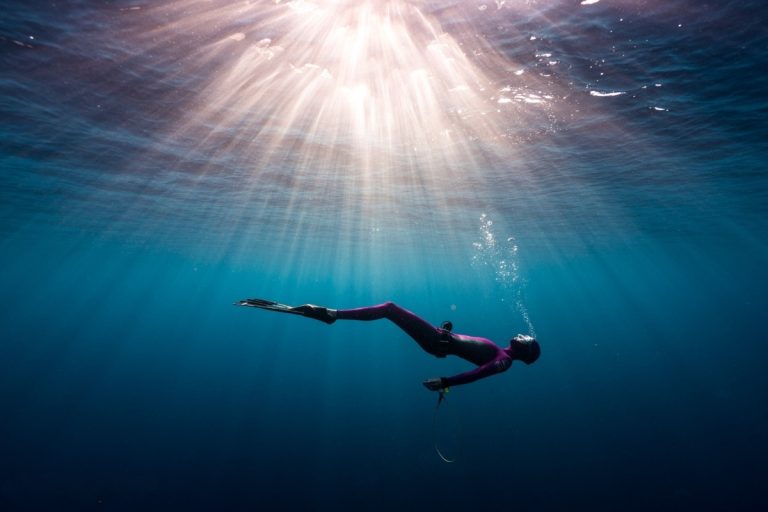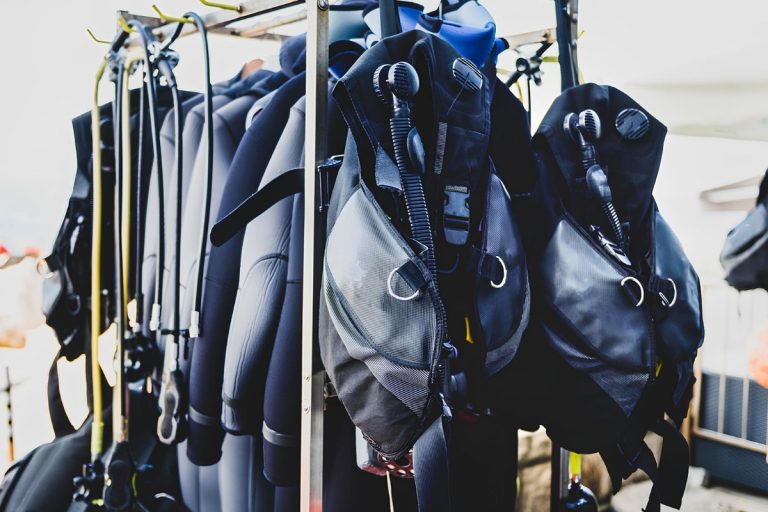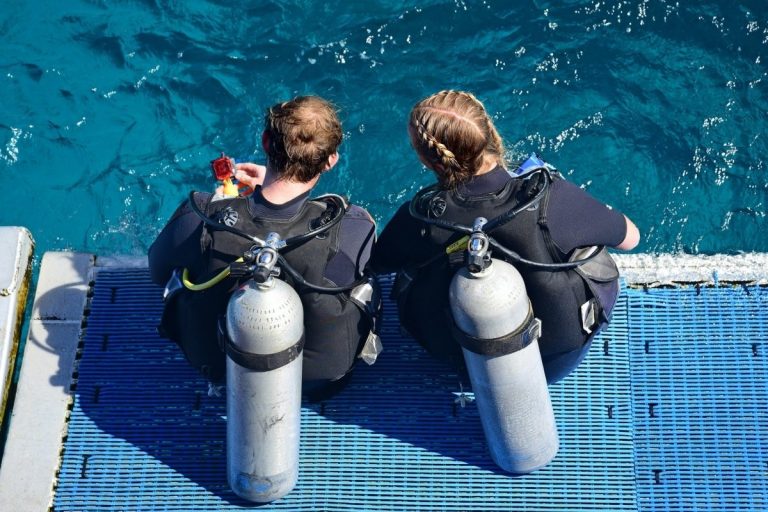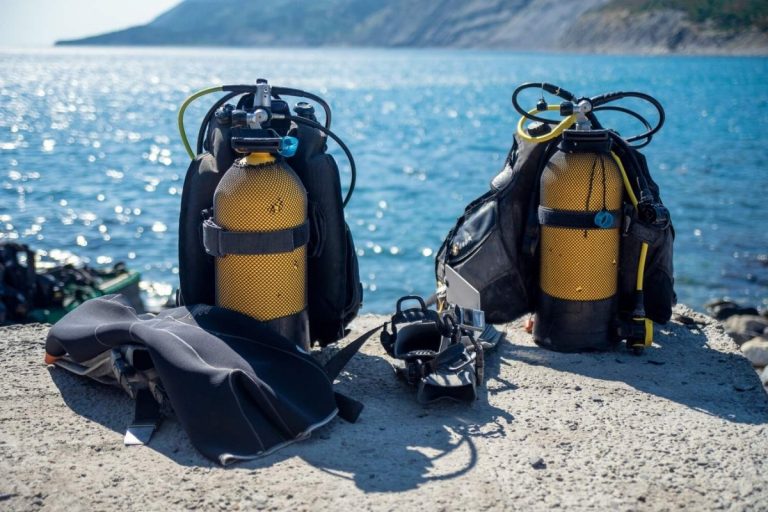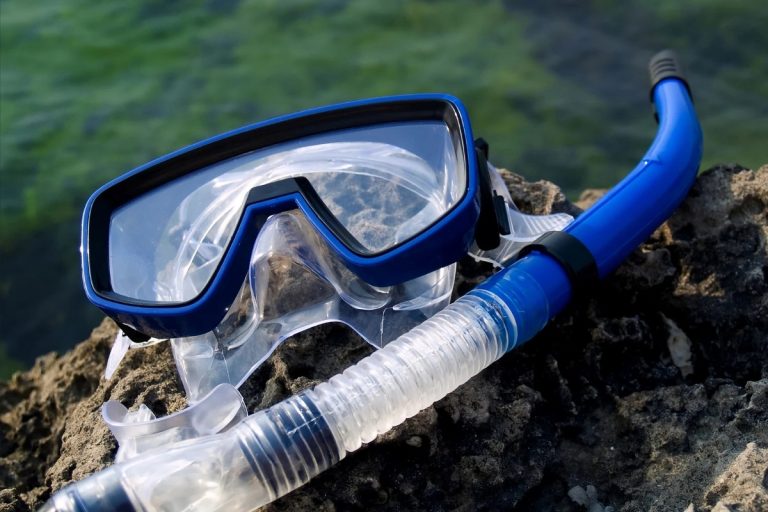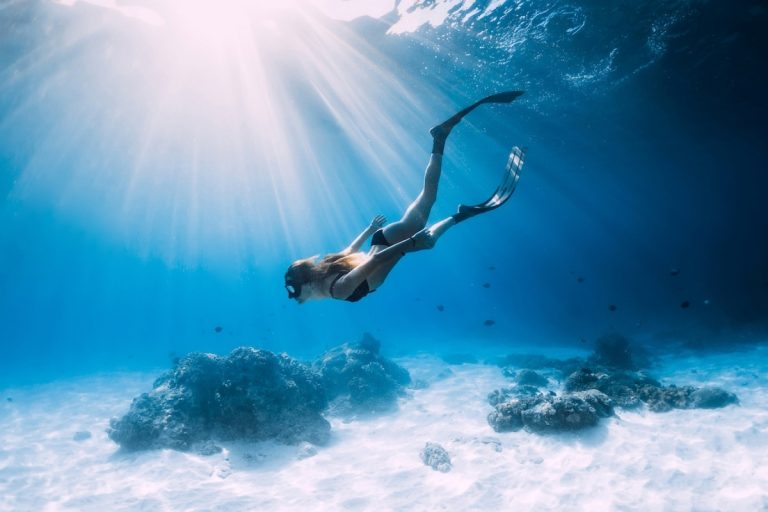- Introduction to Neoprene and Eco-Friendly Alternatives
- Understanding Neoprene
- Environmental Impact of Traditional Neoprene
- Types of Eco-Friendly Neoprene Alternatives
- Performance Features of Eco-Friendly Alternatives
- Innovations in Eco-Friendly Wetsuit Design
- Caring for Neoprene and Eco-Friendly Wetsuits
- Choosing the Right Wetsuit: Women’s vs. Men’s Cuts
- Frequently Asked Questions
- Embracing Sustainable Choices in Water Sports
Introduction to Neoprene and Eco-Friendly Alternatives
The world of water sports has long relied on traditional neoprene wetsuits, but growing environmental awareness is pushing both manufacturers and consumers toward more sustainable options. As ocean temperatures rise and marine ecosystems face unprecedented challenges, the materials we use for our aquatic adventures matter more than ever.
Traditional neoprene, while effective for thermal protection, comes with significant environmental costs. The petroleum-based production process releases harmful chemicals and contributes to our carbon footprint. Fortunately, innovative companies are developing alternatives that maintain the performance characteristics we need while reducing environmental impact.
These eco-friendly alternatives range from limestone-based neoprene to plant-derived materials like Yulex rubber. Some manufacturers are even experimenting with recycled materials and bio-based foams made from unexpected sources like crushed seashells. The transition isn’t just about feeling good about our gear choices; it’s about ensuring future generations can enjoy the same pristine waters we love today.
Understanding these alternatives helps us make informed decisions that align with our values without compromising on performance. Whether you’re a weekend warrior or a professional athlete, sustainable wetsuit options now offer comparable warmth, flexibility, and durability to traditional materials.
Understanding Neoprene
History of Neoprene
Neoprene emerged in the 1930s when DuPont scientists developed this synthetic rubber as a petroleum-based alternative to natural rubber. Originally called “polychloroprene,” this revolutionary material quickly found applications beyond its initial industrial uses. The unique properties of neoprene made it ideal for applications requiring resistance to oil, heat, and various chemicals.
The transition to wetsuit applications happened gradually as manufacturers recognized neoprene’s exceptional insulation properties when filled with tiny gas bubbles. This closed-cell structure trapped warm water against the skin while preventing cold water from circulating, making it perfect for thermal protection in aquatic environments.
By the 1950s, neoprene wetsuits became standard equipment for professional divers, surfers, and other water sports enthusiasts. The material’s flexibility allowed for natural movement while providing crucial thermal barriers in cold water conditions.
Properties of Neoprene
Neoprene’s success stems from its remarkable combination of physical and chemical properties. The material exhibits excellent thermal stability, maintaining its flexibility across a wide temperature range. This characteristic proves essential for water sports gear that must perform in varying conditions from tropical waters to frigid mountain lakes.
The closed-cell structure provides outstanding insulation by trapping air or nitrogen gas within millions of tiny bubbles. This design creates an effective thermal barrier while maintaining the material’s flexibility and stretch. Neoprene also demonstrates high oil resistance, elasticity, and impressive tear resistance, making it durable enough for repeated use in challenging environments.
Water resistance represents another key advantage, though neoprene isn’t completely waterproof. Instead, it allows a thin layer of water to enter and warm against the skin, creating an additional insulation layer. This property, combined with its ability to maintain elasticity when wet, makes neoprene ideal for extended water exposure.
Manufacturing Process of Neoprene
Traditional neoprene production begins with petroleum-derived polychloroprene chips that undergo a complex manufacturing process. These chips are melted and mixed with various additives including accelerators, antioxidants, and blowing agents that create the characteristic foam structure.
The mixture is then baked in large ovens where chemical reactions create the final neoprene foam. During this process, blowing agents generate the gas bubbles that give neoprene its insulating properties. The resulting foam blocks are then sliced into sheets of varying thicknesses using precision cutting equipment.
Surface treatments and lamination with fabric backing complete the manufacturing process. Manufacturers typically bond nylon or polyester fabrics to one or both sides of the neoprene sheets, creating the final material used in wetsuit construction. This lamination process requires additional adhesives and heat treatment, adding to the overall environmental impact of traditional neoprene production.
Environmental Impact of Traditional Neoprene
Toxins and Chemicals in Production
Traditional neoprene manufacturing releases numerous harmful substances into the environment. The petroleum-based production process generates volatile organic compounds (VOCs) that contribute to air pollution and potential health risks for factory workers and surrounding communities. Chloroprene, the primary building block of neoprene, is classified as a likely human carcinogen by environmental agencies.
The manufacturing process also produces sulfur compounds, which create the characteristic smell of new neoprene products. These compounds can persist in the environment and contribute to water contamination when factories discharge untreated wastewater. Heavy metals used as catalysts in the production process pose additional environmental concerns.
Adhesives and solvents used in lamination processes add another layer of chemical complexity. Many of these substances contain formaldehyde and other compounds that can off-gas over time, potentially affecting both environmental and human health. The cumulative effect of these chemicals throughout the supply chain creates a significant environmental burden.
Comparison of Environmental Footprint
The carbon footprint of traditional neoprene production is substantial, primarily due to its petroleum origins and energy-intensive manufacturing processes. Extracting and refining petroleum requires significant energy inputs, while the chemical synthesis of polychloroprene adds additional carbon emissions. Transportation of raw materials and finished products further increases the overall environmental impact.
Water usage in traditional neoprene production is another concern. The manufacturing process requires large quantities of water for cooling, cleaning, and chemical reactions. Much of this water becomes contaminated with production chemicals and requires treatment before discharge, though not all facilities maintain adequate treatment standards.
Waste generation throughout the production cycle includes both solid waste from trimming and cutting operations and liquid waste from chemical processes. While some manufacturers have implemented recycling programs for production waste, the majority of neoprene waste still ends up in landfills where it can persist for decades without significant degradation.
Health Concerns Related to Neoprene
Extended exposure to traditional neoprene can cause skin sensitivities in some individuals. The chemicals used in production and the additives incorporated during manufacturing can trigger allergic reactions, particularly in people with sensitive skin. These reactions typically manifest as contact dermatitis or skin irritation after prolonged contact with neoprene products.
Off-gassing from new neoprene products can cause respiratory irritation in sensitive individuals. The volatile compounds released from fresh neoprene, while generally considered safe at typical exposure levels, can cause discomfort in enclosed spaces or during extended wear periods. Proper ventilation and allowing new products to air out before use can minimize these effects.
Long-term health implications remain a subject of ongoing research. While casual use of neoprene products poses minimal risk to most people, occupational exposure in manufacturing facilities has raised concerns about potential carcinogenic effects. These concerns have motivated both regulatory oversight and the development of alternative materials that reduce exposure risks.
Types of Eco-Friendly Neoprene Alternatives
Limestone Neoprene
Limestone neoprene represents one of the most promising alternatives to petroleum-based materials. This innovative approach uses powdered limestone as the primary raw material instead of petroleum-derived chemicals. The limestone undergoes processing to create calcium carbide, which then converts to acetylene gas and finally to chloroprene rubber through a series of chemical reactions.
The environmental benefits of limestone neoprene are significant. Limestone is abundant and renewable on geological timescales, reducing dependence on finite petroleum resources. The production process generates fewer toxic byproducts compared to traditional methods, though it still requires energy-intensive chemical processing.
Performance characteristics of limestone neoprene closely match traditional materials. Users report comparable warmth, flexibility, and durability in real-world conditions. The material maintains the same closed-cell structure that provides effective thermal insulation while offering similar stretch and recovery properties essential for comfortable movement during water activities.
Yulex Neoprene
Yulex neoprene derives from natural guayule rubber, a desert shrub that grows in arid regions of the southwestern United States and Mexico. This plant-based alternative represents a significant departure from synthetic materials while maintaining the performance characteristics demanded by serious water sports enthusiasts.
The guayule plant offers several environmental advantages. It requires minimal water for cultivation compared to other crops and can grow in marginal agricultural land unsuitable for food production. The plant also acts as a carbon sink during its growth cycle, helping offset the carbon emissions from processing and manufacturing.
Processing guayule into wetsuit material involves extracting natural rubber from the plant and combining it with other sustainable materials to create the final foam. The resulting Yulex neoprene demonstrates excellent thermal properties and flexibility while being naturally hypoallergenic, making it suitable for users with sensitivities to traditional neoprene.
Recycled Neoprene
Recycled neoprene addresses the waste problem associated with traditional wetsuit disposal. This approach collects discarded wetsuits and other neoprene products, processes them to remove contaminants and fabric backing, then reprocesses the material into new foam sheets suitable for wetsuit construction.
The recycling process involves shredding old neoprene products and combining the resulting material with binding agents to create new foam blocks. While the thermal properties may be slightly reduced compared to virgin materials, recycled neoprene still provides adequate insulation for many water sports applications.
Environmental benefits include diverting waste from landfills and reducing the demand for new raw materials. However, the recycling process requires energy inputs and may involve additional chemicals to achieve the desired properties. Despite these limitations, recycled neoprene represents an important step toward circular economy principles in wetsuit manufacturing.
Bioprene Made from Crushed Seashells
Bioprene represents an innovative approach that incorporates crushed seashells into the foam structure. This unusual material takes advantage of waste products from seafood processing industries, creating value from materials that would otherwise require disposal.
The calcium carbonate in crushed seashells provides structural benefits to the foam while reducing the amount of synthetic materials required. The shells undergo processing to achieve appropriate particle sizes and purity levels before incorporation into the foam matrix. This process creates a hybrid material that combines natural and synthetic components.
Performance testing shows that bioprene maintains good thermal properties while offering unique benefits such as natural antimicrobial properties from the shell material. The calcium carbonate also enhances durability and provides a different feel compared to traditional neoprene, though some users require an adjustment period to appreciate these differences.
Ariaprene and EicoPrene
Ariaprene represents a recyclable, hypoallergenic foam alternative that addresses both environmental and health concerns associated with traditional neoprene. This material uses alternative chemical formulations that eliminate many of the problematic compounds found in conventional production while maintaining performance characteristics.
EicoPrene combines limestone-derived materials with recycled tire rubber, creating a hybrid approach that addresses multiple environmental concerns. The tire rubber component diverts waste from landfills while the limestone component reduces petroleum dependence. This combination creates a unique material profile with distinct performance characteristics.
Both materials demonstrate the industry’s commitment to finding creative solutions that balance environmental responsibility with performance requirements. While these alternatives may have different feel and performance characteristics compared to traditional neoprene, they represent important steps toward more sustainable wetsuit materials that don’t compromise on essential features like warmth and flexibility.
Performance Features of Eco-Friendly Alternatives
Warmth and Flexibility
Eco-friendly wetsuit materials have made significant strides in matching the thermal performance of traditional neoprene. Limestone-based alternatives demonstrate comparable insulation properties, maintaining body heat effectively in cold water conditions. The closed-cell structure remains intact across different manufacturing approaches, ensuring that the fundamental thermal barrier properties are preserved.
Flexibility represents another crucial performance metric where sustainable alternatives excel. Yulex neoprene, derived from natural rubber, often provides superior stretch and recovery compared to petroleum-based materials. This enhanced flexibility translates to better range of motion during swimming, surfing, or diving activities. Understanding proper wetsuit thickness becomes even more important when selecting eco-friendly options, as different materials may perform differently at various thicknesses.
The break-in period for eco-friendly materials may differ from traditional neoprene. Some users report that plant-based alternatives feel softer initially but develop similar stretch characteristics after several uses. Limestone neoprene typically feels very similar to traditional materials from the first wear, making the transition seamless for most users.
Durability and Resistance
Long-term durability testing shows that many eco-friendly alternatives match or exceed traditional neoprene in key performance areas. Limestone neoprene demonstrates excellent resistance to UV degradation, salt water exposure, and temperature cycling. The material maintains its structural integrity through repeated compression and expansion cycles typical of regular wetsuit use.
Tear resistance varies among different alternative materials. Recycled neoprene may show slightly reduced tear strength compared to virgin materials, though proper construction techniques can mitigate this limitation. Yulex-based materials often demonstrate superior puncture resistance due to the natural rubber’s inherent toughness.
Chemical resistance remains important for users who encounter various water conditions. Most eco-friendly alternatives maintain good resistance to chlorine, salt water, and common pollutants found in natural water bodies. However, some plant-based materials may be more susceptible to certain organic solvents, though this rarely affects normal use patterns.
Breathability and Comfort
Comfort characteristics often improve with eco-friendly alternatives. Many users report reduced skin irritation when switching from traditional neoprene to plant-based or limestone alternatives. The elimination of certain petroleum-derived chemicals reduces the likelihood of allergic reactions or contact dermatitis.
Breathability in wetsuit materials refers to the material’s ability to allow moisture vapor transfer during surface intervals. While no neoprene alternative is truly breathable in the traditional sense, some eco-friendly options demonstrate improved moisture management properties. This can reduce the clammy feeling that sometimes occurs during extended wear periods.
Odor resistance represents another comfort advantage of certain eco-friendly materials. Natural antimicrobial properties in some plant-based alternatives help reduce bacterial growth that can cause unpleasant odors. Bioprene materials with crushed shell content often demonstrate natural odor-fighting properties that keep wetsuits fresher between uses.
Innovations in Eco-Friendly Wetsuit Design
Seam Welded and No-Stitch Technologies
Modern eco-friendly wetsuits incorporate advanced seam construction techniques that enhance both performance and environmental benefits. Seam welded technology eliminates the need for traditional stitching, which can create weak points and allow water infiltration. This technique uses heat and pressure to bond wetsuit panels together, creating water-tight seams that maintain the suit’s thermal properties.
No-stitch technologies take this concept further by using specialized adhesives and welding techniques that create seamless construction. These methods not only improve waterproofing but also reduce the amount of thread and other materials required in manufacturing. The result is a more sustainable production process with less waste generation.
The environmental benefits extend beyond material reduction. Welded seams typically last longer than traditional stitched seams, extending the overall lifespan of the wetsuit. This durability reduces the frequency of replacement purchases, decreasing the overall environmental impact per use over the product’s lifetime.
Automatic Torso Recoil
The patented Automatic Torso Recoil system represents an innovative approach to wetsuit design that improves both functionality and user experience. This technology uses strategic placement of elastic panels that automatically adjust to body movement, reducing strain on the material and improving comfort during extended wear.
This system reduces material stress during donning and doffing, which are typically the most challenging moments for wetsuit durability. By incorporating automatic adjustment mechanisms, the technology extends wetsuit lifespan while improving user comfort. The reduced stress on seams and material also means fewer repairs and longer service life.
From an environmental perspective, the longer lifespan enabled by this technology reduces the frequency of wetsuit replacement. When combined with eco-friendly materials, this innovation creates a more sustainable overall product that maintains performance while minimizing environmental impact throughout its extended service life.
Omnired Thermal Fabric
Omnired thermal fabric represents a breakthrough in thermal management technology that enhances the performance of eco-friendly wetsuit materials. This innovative fabric incorporates minerals that capture and reflect body heat back to the wearer, effectively increasing the thermal efficiency of the wetsuit without adding bulk or reducing flexibility.
The technology works by converting body heat into infrared energy and reflecting it back to the body. This process creates additional warmth without requiring thicker neoprene, allowing for more flexible and comfortable wetsuits. The thermal enhancement is particularly beneficial when combined with eco-friendly materials that may have slightly different thermal properties than traditional neoprene.
Environmental benefits include the ability to achieve superior thermal performance with thinner materials, reducing the overall material usage per wetsuit. The technology also enables effective thermal protection in milder conditions where traditional thick wetsuits might be unnecessarily bulky, expanding the useful temperature range of eco-friendly alternatives.
Caring for Neoprene and Eco-Friendly Wetsuits
Rinsing and Hang-Drying
Proper neoprene care extends the lifespan of both traditional and eco-friendly wetsuits significantly. Thorough rinsing after each use removes salt, sand, and other contaminants that can degrade materials over time. Fresh water rinsing should occur both inside and outside the wetsuit, paying particular attention to zippers and seam areas where salt crystals can accumulate.
Temperature considerations are crucial during the rinsing process. Cool to lukewarm water works best, as hot water can damage the foam structure and cause premature aging. Some eco-friendly materials may be more sensitive to temperature extremes, making proper rinsing technique even more important for maintaining performance characteristics.
Hang-drying requires careful attention to avoid damage from excessive heat or UV exposure. Wetsuits should be hung in shaded, well-ventilated areas away from direct sunlight. Folding the wetsuit inside-out periodically during drying ensures even moisture removal and prevents the development of permanent creases that can weaken the material structure.
Storage Recommendations
Long-term storage practices significantly impact wetsuit longevity regardless of material type. Wetsuits should be completely dry before storage to prevent mold and mildew growth. Eco-friendly materials may be more susceptible to biological degradation, making thorough drying even more critical for these alternatives.
Storage environment affects material integrity over time. Cool, dry locations away from direct sunlight and heat sources provide optimal conditions. Hanging storage is preferred over folding, as creases can become permanent and create weak points in the material. Wide hangers distribute weight evenly and prevent stretching of shoulder areas.
Chemical exposure during storage can damage wetsuit materials. Storage areas should be free from petroleum products, solvents, and other chemicals that might interact with neoprene alternatives. Some eco-friendly materials may be more reactive to certain chemicals, requiring extra attention to storage environment selection.
Repairing Tears and Leaks
Prompt repair of minor damage prevents small problems from becoming major failures. Most tears and punctures in eco-friendly materials can be repaired using appropriate adhesives and patch materials. However, different alternative materials may require specific repair products for optimal results.
Repair techniques vary depending on the type of eco-friendly material. Limestone neoprene typically accepts standard neoprene cements, while plant-based materials may require specialized adhesives. Understanding the specific material composition helps ensure repair success and prevents further damage from incompatible products.
Preventive maintenance includes regular inspection for signs of wear or damage. Early detection allows for simple repairs that extend wetsuit life significantly. This proactive approach aligns with sustainable practices by maximizing the useful life of eco-friendly products and reducing the need for premature replacement.
Choosing the Right Wetsuit: Women’s vs. Men’s Cuts
Fit Considerations for Women
Women’s wetsuit design addresses specific anatomical differences that affect both comfort and performance. The torso length, shoulder width, and hip measurements require different proportions compared to men’s cuts. Understanding these fit tips for women’s and men’s wetsuits helps ensure optimal thermal protection and comfort regardless of the material choice.
Bust accommodation represents a critical design element in women’s wetsuits. Proper chest panel design prevents excessive stretching of the material while maintaining thermal integrity. Eco-friendly materials may have different stretch characteristics, making proper sizing even more important for achieving the right balance of comfort and thermal protection.
Hip and thigh proportions in women’s cuts account for different body shapes and movement patterns. The increased flexibility of some eco-friendly alternatives can provide better accommodation for these anatomical differences, potentially improving overall fit and comfort compared to traditional materials.
Fit Considerations for Men
Men’s wetsuit cuts focus on broader shoulders and longer torso proportions typical of male anatomy. The chest and shoulder panels require different stretch characteristics to accommodate larger muscle mass while maintaining thermal efficiency. Eco-friendly alternatives often provide excellent performance in these high-stretch areas.
Waist and hip proportions in men’s cuts typically feature straighter lines compared to women’s designs. This difference affects how the wetsuit sits on the body and influences thermal protection effectiveness. Some eco-friendly materials offer improved conformability that can enhance fit across different body types.
Arm and leg length proportions in men’s cuts account for typically longer limbs. The stretch and recovery characteristics of different eco-friendly materials can affect how well the wetsuit maintains proper positioning during activity. Understanding these differences helps in selecting the most appropriate material type for individual needs.
Common Sizing Issues
Sizing inconsistencies between brands can complicate wetsuit selection, particularly when transitioning to eco-friendly alternatives. Different materials may fit differently even within the same size designation, requiring careful attention to manufacturer sizing charts and fit recommendations.
Stretch characteristics vary among eco-friendly alternatives, affecting how sizes translate between different material types. Materials with different stretch properties may require size adjustments to achieve the same fit as traditional neoprene. This consideration is particularly important when switching between material types or trying new brands.
Break-in periods differ among various eco-friendly materials, affecting initial fit assessment. Some alternatives may feel tight initially but stretch to proper fit after several uses, while others maintain consistent sizing from first wear. Understanding these characteristics helps avoid sizing mistakes that could affect both comfort and thermal performance.
Frequently Asked Questions
What are the main environmental concerns regarding traditional neoprene?
Traditional neoprene production involves petroleum-based materials that release harmful chemicals and contribute to significant carbon emissions. The manufacturing process also generates waste and can lead to water contamination.
What are some eco-friendly alternatives to traditional neoprene?
Eco-friendly alternatives include limestone neoprene, Yulex rubber derived from guayule plants, recycled neoprene from discarded wetsuits, and bioprene made from crushed seashells.
Do eco-friendly wetsuits perform as well as traditional neoprene wetsuits?
Yes, many eco-friendly wetsuit materials match or exceed the thermal performance, flexibility, and durability of traditional neoprene, making them suitable for various water sports.
How can I care for my eco-friendly wetsuit to extend its lifespan?
Rinse your wetsuit after use, hang-dry it in shaded areas, store it properly to avoid creases, and repair any damage promptly to maximize its longevity.
Are there specific fit considerations for women's versus men's wetsuits?
Yes, women's wetsuits are designed to accommodate anatomical differences such as torso length and bust size, while men's wetsuits focus on broader shoulders and longer torso proportions.
Embracing Sustainable Choices in Water Sports
As environmental awareness continues to grow, the shift towards sustainable wetsuit materials reflects a commitment to preserving our oceans for future generations. By choosing eco-friendly alternatives, water sports enthusiasts can enjoy their activities while minimizing their ecological footprint, ensuring that pristine waters remain accessible and enjoyable for all.

